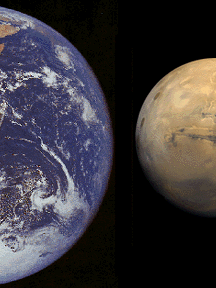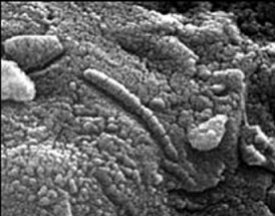Exploratour - Comparing the Surfaces of Earth and Mars

NASA
This page is the start of a tour which compares the surfaces of Earth and Mars. In this tour we will describe and compare some features of the surfaces of these planets. Use the navigation button at the top right of the page to move through the tour. To go to the next page, just press the forward link on the navigation button.
Mars is much smaller than the Earth. It has no oceans, no trees or other forms of life that we can see on the surface. But Mars is still a pretty special place! You'll see that Mars has many of the biggest things in the solar system - the biggest volcano, the deepest hole in the ground, and the biggest canyon.











